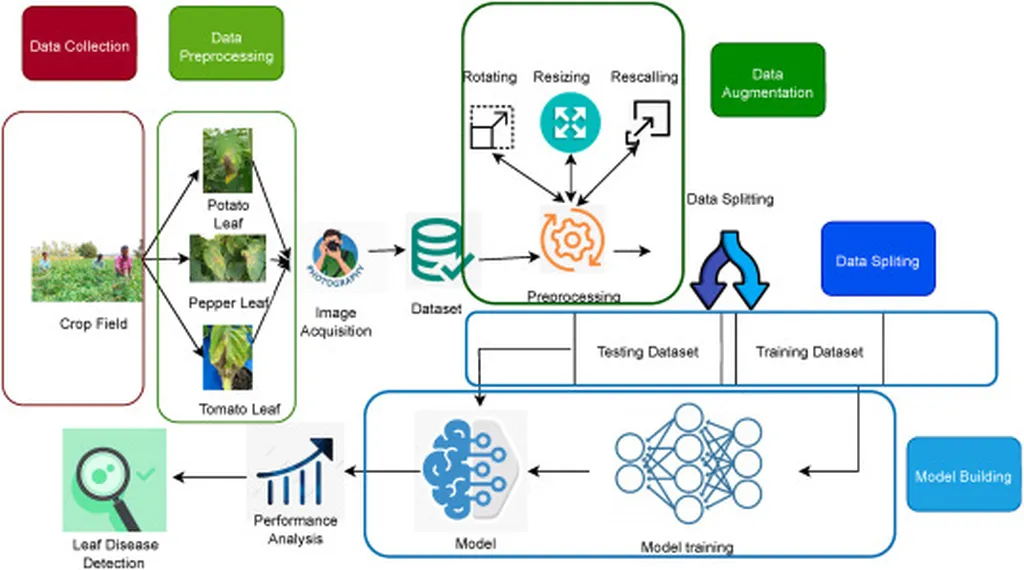In the heart of Bangladesh, researchers are harnessing the power of deep learning and explainable AI to revolutionize rice disease detection, a breakthrough that could reshape precision agriculture and bolster food security. Tanjim Mahmud, a computer science and engineering expert from Rangamati Science and Technology University, has led a study that promises to enhance the accuracy and transparency of rice leaf disease classification.
The study, published in the esteemed journal *IEEE Access* (translated to English as “IEEE Open Access”), focuses on detecting and classifying four common rice leaf diseases: bacterial leaf blight, brown spot, tungro, and blast, as well as identifying healthy leaves. By employing advanced image preprocessing techniques like Gaussian filtering and Contrast Limited Adaptive Histogram Equalization (CLAHE), the researchers enhanced image contrast, making it easier to extract crucial features using Canny and Prewitt edge detection algorithms.
Mahmud and his team integrated explainable AI methods such as Grad-CAM, Grad-CAM++, and LIME to provide detailed visual explanations of model predictions. This transparency is vital for building trust in AI-driven agricultural solutions. “Our goal was not just to achieve high accuracy but also to ensure that the model’s decisions are interpretable,” Mahmud explained. “This is crucial for farmers and agronomists who need to understand why a particular diagnosis was made.”
The results are impressive, with models achieving an accuracy of 99%, a significant improvement over previous methods. This high level of precision could lead to more effective disease management strategies, reducing crop losses and increasing yields. “The potential impact on the agricultural sector is enormous,” Mahmud noted. “Early and accurate disease detection can lead to timely interventions, ultimately improving food security and economic stability for farmers.”
However, the study acknowledges a limitation: the relatively small number of rice disease samples. Mahmud anticipates that expanding the dataset and increasing the testing scale will further improve the model’s generalization capacity. “We are optimistic that with more data, our model will become even more robust and reliable,” he added.
The integration of visualization techniques not only improves the interpretability of deep learning models but also facilitates their practical application in precision agriculture. This research could pave the way for similar AI-driven solutions in other crops, potentially transforming the agricultural landscape.
As the world grapples with the challenges of climate change and food security, innovations like Mahmud’s offer a glimmer of hope. By combining cutting-edge technology with practical agricultural applications, this study exemplifies the potential of AI to drive sustainable development and support the energy sector’s broader goals. The journey towards precision agriculture is just beginning, and the insights from this research could shape its future trajectory.

